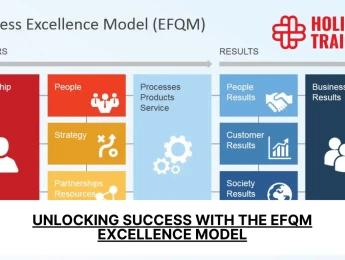- Table of Contents
- Introduction
- Transformative Strategies in Modern Digital Marketing
- 1. The Role of Artificial Intelligence in Marketing
- 1.1 Incorporating Artificial Intelligence
- 1.2 The Power of Data-Driven Marketing
- 2. The Evolution of Content Marketing
- 2.1 The Reign of Video Content
- 2.2 Providing Value Through Interactive Content
- 2.3 Youth-Centric Marketing
- 3. Optimising Search and Customer Engagement
- 3.1 Creative Search Methods
- 3.2 Voice-Search Optimisation
- 3.3 Personalisation through Social Listening
- 4. Building Brand Trust and Community
- 4.1 Transparency, Inclusivity, and Sustainability
- 4.2 Community and Network
- 4.3 Leveraging the Power of Influencer Marketing
- 5. Advanced Customer Targeting Techniques
- 5.1 Crafting the Ultimate Sales Funnel
- 5.2 Account-Based Marketing
- How to Identify and Adapt to Market Trends
- 1- Continuous Learning
- 2- Data Analysis
- 3- Competitive Analysis
- 4- Consumer Insights
- 5- Tech Exploration
- 6- Adaptability
- Conclusion
Introduction
In a world where change is the only constant, the marketing realm is a testament to the relentless pace of innovation and transformation. To navigate this dynamic landscape successfully, businesses must keep up with trends and proactively identify, understand, and leverage them to carve their path to success. In this comprehensive exploration, we'll dive into the top marketing trends currently redefining the industry, and equip you with the insights you need to stay informed and ahead of the curve.
Transformative Strategies in Modern Digital Marketing
1. The Role of Artificial Intelligence in Marketing
1.1 Incorporating Artificial Intelligence
The ascent of artificial intelligence in marketing is nothing short of revolutionary. Beyond mere automation, AI-powered tools are rewriting the playbook on how businesses understand and engage with their customers. AI's capabilities, from predictive analytics to natural language processing, empower brands to analyse vast amounts of data and derive actionable insights that drive strategic decision-making.
Imagine a scenario where customer inquiries are addressed instantaneously by intelligent chatbots that provide accurate responses around the clock. This ensures customer satisfaction and frees human resources to focus on more complex tasks requiring a human touch. AI also shines in predictive analytics, helping marketers foresee trends, customer behaviours, and potential pain points, allowing them to tailor their strategies with unparalleled precision.
1.2 The Power of Data-Driven Marketing
The era of "gut feeling" decision-making in marketing is rapidly fading, replaced by data-driven strategies that offer precision and effectiveness. Data analytics give brands a wealth of insights into consumer behaviours, enabling them to optimise campaigns, personalise experiences, and measure return on investment.
Imagine an e-commerce brand that uses data analytics to understand its customers' browsing patterns. By identifying the products frequently viewed together, the brand can create personalised bundles or offer recommendations, increasing the likelihood of cross-selling and upselling. Data-driven decision-making eliminates guesswork, enabling brands to make informed choices backed by concrete evidence.
2. The Evolution of Content Marketing
2.1 The Reign of Video Content
In an era characterised by dwindling attention spans, the allure of video content has emerged as a powerful tool for brands to engage, entertain, and educate their audience. Visual storytelling transcends language barriers and evokes emotions in ways that text alone cannot. With the advent of innovative technologies like AI text-to-video tools, brands can effortlessly transform written content into captivating videos. From bite-sized content optimised for social media platforms to long-form narratives that resonate deeply, video has become the ultimate storytelling medium.
Consider the meteoric rise of platforms like TikTok, where short, attention-grabbing videos create a cultural phenomenon in seconds. Brands are capitalising on this trend by crafting creative, memorable videos that authentically reflect their values and mission. Through videos, brands can tell their stories, showcase products in action, and even provide behind-the-scenes glimpses into their operations, fostering a sense of connection and transparency that modern consumers crave.
2.2 Providing Value Through Interactive Content
Static content, while informative, often struggles to maintain attention in today's fast-paced digital landscape. Interactive content, on the other hand, provides an avenue for consumers to engage and participate actively in the brand experience. Quizzes, polls, interactive infographics, and augmented reality filters invite users to become a part of the content, transforming them from passive observers to active participants.
Consider an interactive quiz on a skincare brand's website that helps users identify the best products for their skin type. This imparts valuable information and creates a memorable experience that users will likely share with others. Interactive content fosters a deeper level of engagement, making the brand's message more memorable and shareable, extending its reach.
2.3 Youth-Centric Marketing
The younger generation, often referred to as Gen Z, has introduced a new set of challenges and opportunities for marketers. Gen Z is characterised by their innate digital savviness, social consciousness, and a desire for authentic interactions. Successfully capturing their attention requires an approach that aligns with their values and leverages platforms they frequent, which are, according to Hootsuite, YouTube (95%), TikTok (67%), and Instagram (62%).
Consider a sustainable fashion brand that produces eco-friendly clothing and shares behind-the-scenes stories about its supply chain transparency and ethical practices. Such content resonates with Gen Z's values, fostering a sense of connection and loyalty. Additionally, platforms like TikTok and Instagram Reels, where short-form video content thrives, provide a unique space for brands to engage with this demographic creatively.
3. Optimising Search and Customer Engagement
3.1 Creative Search Methods
The landscape of search is rapidly evolving beyond traditional keyword-based queries. Visual and voice searches spearhead this transformation, reshaping how consumers interact with search engines and discover content. Visual search, driven by advancements in image recognition technology, empowers users to snap photos and instantly find similar items online. This presents a unique opportunity for brands to optimise their visual content for discovery through visual search engines.
Voice search, powered by virtual assistants like Amazon's Alexa and Apple's Siri, has opened up an entirely new dimension of interaction. Unlike typed searches, voice queries tend to be more conversational and context-dependent. Brands that adapt to this trend by tailoring their content to natural language and addressing the specific questions users ask can gain a significant competitive advantage in voice search results.
3.2 Voice-Search Optimisation
The ubiquity of voice assistants embedded in smartphones, smart speakers, and other devices has given rise to a new way of searching for information—voice search. Unlike traditional typed queries, voice search queries tend to be more conversational, mirroring natural language patterns. Brands that adapt to this trend stand to benefit from higher visibility in search results and enhanced user experiences.
Imagine a user asking their voice assistant, "Where can I find the best Italian restaurant nearby?" In this scenario, brands that have optimised their content for local queries and have succinctly provided the necessary information are more likely to be recommended by the voice assistant. Voice-search optimisation involves focusing on natural language, anticipating user intent, and providing concise, relevant answers that cater to these conversational queries.
3.3 Personalisation through Social Listening
In the age of information overload, consumers expect more than personalised email greetings. Social listening, the practice of monitoring online conversations, provides brands with invaluable insights into consumer sentiment, preferences, and pain points. By actively engaging in these conversations, brands can understand their audience better and tailor their marketing efforts accordingly.
Social Media Today collected insights from over 650 professionals across various industries to deepen our understanding of the current landscape of social listening and strategies for enhancement. The findings reveal that nearly 61% of businesses have implemented a social listening system, actively monitoring keyword mentions. Moreover, a substantial majority, exceeding 82%, recognises social listening as a crucial component in strategic planning.
Imagine a brand that notices a recurring complaint about a certain aspect of its product through social media discussions. By addressing this issue promptly and publicly, the brand resolves a customer pain point and demonstrates its commitment to customer satisfaction and continuous improvement. Social listening goes beyond the quantitative metrics and delves into the qualitative aspects of the customer experience, allowing brands to build deeper connections and lasting relationships.
4. Building Brand Trust and Community
4.1 Transparency, Inclusivity, and Sustainability
In a world saturated with options, consumers are increasingly drawn to brands that embody values of transparency, inclusivity, and sustainability. Transparent brands are those that share their processes, sourcing, and practices openly, fostering a sense of trust with their audience. Inclusive brands prioritise diversity and representation in their marketing and communications, reflecting our diverse society. Sustainable brands prioritise environmentally conscious practices and initiatives, aligning with the growing global concern for the planet.
Consider a beauty brand that discloses the ingredients used in its products and shares the sourcing journey of each ingredient, shedding light on ethical practices. Inclusivity could involve featuring various models in their advertising campaigns, ensuring everyone feels represented and valued. Sustainable practices might entail using recyclable packaging and supporting eco-friendly initiatives. Brands that embody these principles resonate with consumers on a deeper level, forging connections based on shared values.
4.2 Community and Network
In an age where customers are bombarded with advertisements and promotions, brands that transcend transactional relationships and create genuine communities hold a distinct advantage. Social media platforms and online forums provide the perfect canvas for nurturing these communities, where like-minded individuals can connect, share experiences, and seek advice from peers.
Imagine a fitness apparel brand that sells activewear and hosts online fitness challenges, provides expert advice on nutrition and exercise, and facilitates a supportive community of fitness enthusiasts. This approach transforms the brand from a mere seller to a trusted partner on the consumer's journey towards a healthier lifestyle. Such communities foster loyalty and brand advocacy, as members feel a sense of belonging and empowerment.
4.3 Leveraging the Power of Influencer Marketing
Once viewed as a novel strategy, influencer marketing has evolved into a core channel for brands to reach their target audience authentically. The traditional model of partnering with celebrity endorsers has given way to collaborations with micro-influencers—individuals with a smaller but highly engaged following that aligns closely with the brand's niche.
Micro-influencers, often experts in their fields, bring a sense of authenticity and relatability to their content. Their endorsements carry weight because they are perceived as genuine recommendations from someone who shares the same interests as their followers. Brands increasingly focus on long-term partnerships with micro-influencers, allowing for deeper connections and more authentic storytelling that resonates with the audience.
Challenges | Solutions |
Authenticity Concerns Balancing trust and brand alignment. | Establish clear brand-influencer guidelines. |
ROI Measurement Determining the impact on business goals. | Use trackable metrics and performance analytics. |
Saturation in the Market Overcrowded influencer landscape. | Focus on niche influencers for authenticity. |
Changing Audience Demands Adapting to shifting audience preferences. | Regularly analyse audience demographics and behaviour. |
Influencer Credibility Ensuring influencers maintain credibility. | Vet influencers for consistent, genuine engagement. |
Table 1: The Challenges of Influencer Marketing & Plausible Solutions
5. Advanced Customer Targeting Techniques
5.1 Crafting the Ultimate Sales Funnel
The traditional notion of a linear sales funnel has evolved into a more intricate, dynamic process that mirrors the complexity of modern consumer behaviour. Today's consumers engage with brands across multiple touch points, both online and offline, before purchasing. Crafting a comprehensive sales funnel involves mapping out these touchpoints, understanding consumer intent at each stage, and delivering relevant experiences that guide them seamlessly through the journey.
Consider a potential customer who starts by watching a video ad on social media, then explores the brand's website, subscribes to the newsletter, and eventually makes a purchase. Each of these touchpoints is an opportunity to deliver tailored content that matches the user's context and needs. Personalisation has become the cornerstone of successful sales funnels, allowing brands to present the right message at the right time, increasing the likelihood of conversion.
5.2 Account-Based Marketing
Account-Based Marketing (ABM) is a strategy that targets specific accounts with highly tailored campaigns. Unlike traditional marketing approaches that cast a wide net, ABM hones in on the accounts that are most likely to yield high-value results. This approach is particularly effective in B2B scenarios where personalised communication is crucial.
Consider a software company that wants to target enterprise-level clients. Instead of deploying generic advertisements, it would identify key decision-makers within its target companies and deliver personalised content that addresses their specific pain points. By demonstrating a deep understanding of the client's needs and challenges, the company increases its chances of securing meaningful conversations and conversions.
How to Identify and Adapt to Market Trends
Staying ahead in the fast-paced marketing world requires a proactive stance towards embracing change and innovation. Here are some strategies to help you spot, understand, and harness emerging trends:
1- Continuous Learning
In the ever-evolving marketing landscape, continuous learning is not just beneficial; it's imperative. Invest in your professional growth through industry publications, webinars, and workshops. This commitment ensures that you stay abreast of the latest tools, techniques, and strategies, empowering you to adapt swiftly to the market's dynamic trends. By staying informed, you position yourself as a proactive player, always ready to leverage the next big innovation.
2- Data Analysis
Your data is a goldmine of information; regular analysis is the key to unlocking its potential. Dive into performance metrics like website traffic, social media engagement, and conversion rates. You can uncover valuable insights into emerging trends and shifting consumer behaviours by scrutinising patterns and anomalies. This data-driven approach enables you to make informed decisions, optimising your marketing efforts for maximum impact.
3- Competitive Analysis
Keeping a watchful eye on your competitors provides a strategic advantage. Analyse their marketing strategies, campaigns, and initiatives to discern what works for them and identify if they are capitalising on emerging trends. This insight lets you position your brand effectively, learning from their successes and avoiding pitfalls. Competitive analysis is a compass guiding your marketing direction in the competitive landscape.
4- Consumer Insights
Direct engagement with your audience is a powerful tool for understanding their preferences and needs. Conduct surveys, employ feedback forms, and actively participate in social media conversations to gain firsthand insights into your audience's evolving expectations. By incorporating these insights into your strategies, you create campaigns that resonate with your audience, fostering brand loyalty and ensuring continued relevance.
5- Tech Exploration
Embrace the role of technology in marketing innovation by staying curious and open to exploration. Investigate emerging technologies like AI, virtual reality, and blockchain, assessing their potential application to your marketing efforts. Experimenting with new tools and platforms keeps your strategies fresh and relevant and positions your brand as an early adopter, signalling innovation and adaptability to your audience.
6- Adaptability
Successful marketers embrace change as a constant opportunity for growth rather than a disruption. Flexibility is a hallmark trait, allowing you to pivot your strategies swiftly as new trends emerge and consumer behaviours evolve. By fostering an adaptable mindset, you position yourself to capitalise on emerging opportunities, maintaining a competitive edge in the dynamic marketing landscape.
Conclusion
In the ever-evolving marketing landscape, the ability to ride the waves of trend evolution is not just an advantage—it's a necessity. You position yourself as a pioneer in your field by incorporating artificial intelligence, crafting engaging video content, embracing creative search methods, and focusing on personalisation, community-building, and inclusivity. Today's marketing trends are the foundation upon which the success stories of tomorrow are built. As you navigate the dynamic currents of change, remember that staying informed and adapting with agility will keep you at the forefront of the industry's evolution.
As you embark on the journey of mastering the intricacies of modern marketing, consider enrolling in our comprehensive course, ‘Mastering Business to Business Marketing.’ This course is designed to equip you with the latest insights and strategies needed to excel in the dynamic world of B2B marketing. Delve into the nuances of AI-driven analytics, learn the art of creating compelling video content, and discover innovative approaches to search methods. Our program strongly emphasises personalisation, community-building, and inclusivity, ensuring you stay abreast of current trends and pioneer the future of B2B marketing. Don't just ride the waves—command them. Join our course and position yourself at the forefront of industry evolution, unlocking the door to unprecedented success in the competitive landscape of modern business marketing.
























